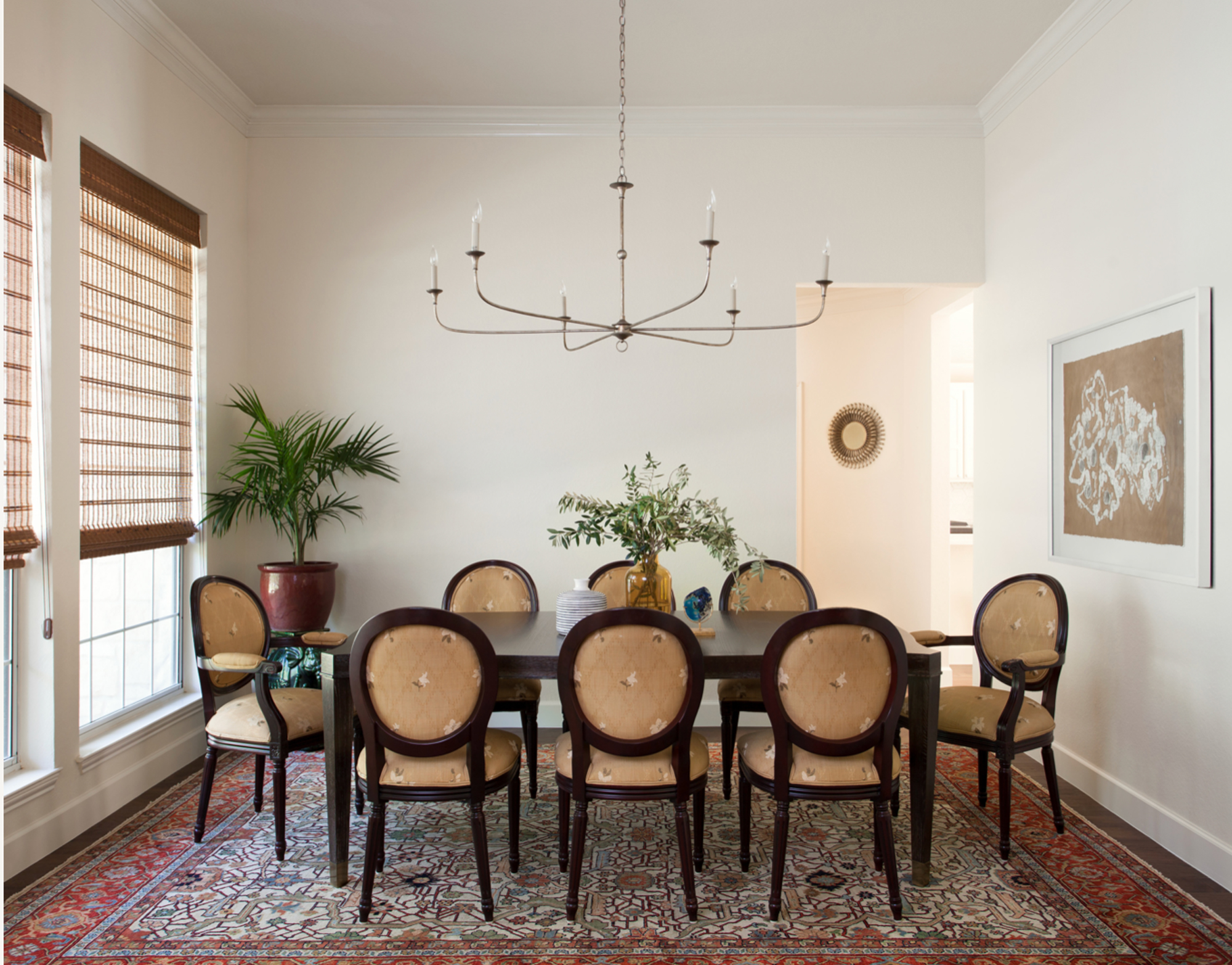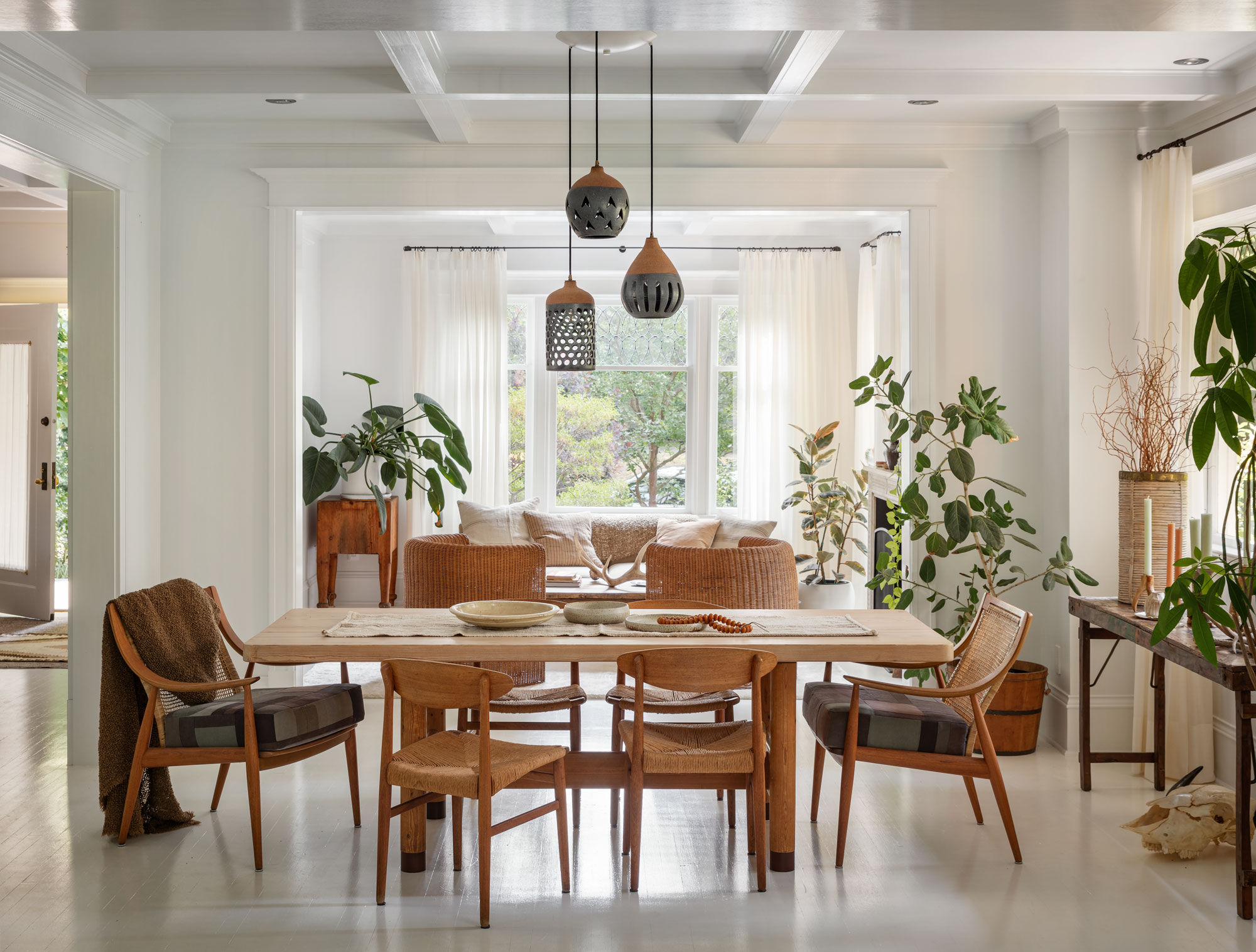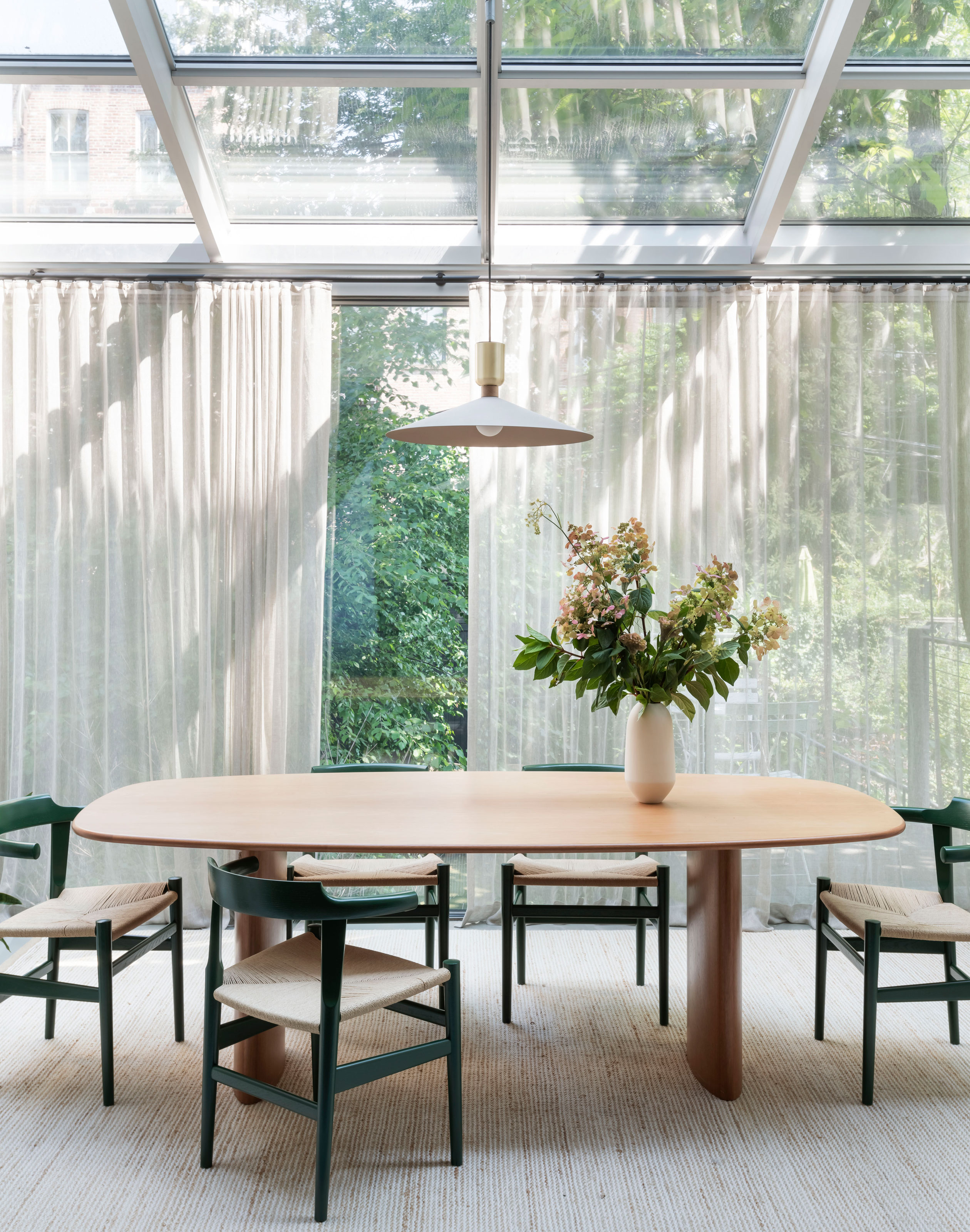Should dining chairs match a table? Designers decide whether matching sets are still an interior design crime
Matching dining room sets may have fallen out of favor in the past, but are they poised for a comeback, or are eclectic dining spaces still in vogue?


To match or not to match, that is the question. As the principal piece of furniture in a dining area - alongside the table - dining chairs play an essential role in the overall look, feel, and experience of the space. A new or upcycled set of dining chairs is an easy and relatively low-cost trick to instantly update a dining room. However, the wrong look can date it just as quickly.
Current home interior design trends suggest matching chairs and tables are a thing of the past, but will the eclectic dining room look soon become passé, or is it here to stay? What are the pros and cons of dining chairs matching the table? And what should we look for when shopping for dining chairs? We asked the experts their opinion.

Sophie is a home interiors writer and all-around design aficionado, currently studying interior design at London's KLC. For this article, she weighs up whether matching dining tables and chairs are still a design faux-pas, with the help of some design experts.
When should dining chairs match a table?

‘Matching chairs and tables are often a good choice with traditional styles,’ says Killy Scheer, interior designer and founder of Scheer & Co. ‘If the furnishings are ornate or highly detailed, matching can ensure a cohesive look.’ Chaya Krinsky, head designer and co-founder of TOV Furniture agrees, especially if you want to achieve a formal, classic, or period aesthetic.
‘Many shoppers consider matching dining chairs a fail-safe choice because they don’t have to worry about how it will look when it arrives,’ adds Chaya. While it may save you time and energy scouring the shops for the most suitable option, the proof of the “one and done” method is in the pudding - as they say. Interior design is more than just a lovely table or pretty set of chairs. A home’s decor should be as unique and interesting as its owner, offering insight into their personal and private world. So, what would a set of mass-produced, just-off-the-showroom-floor dining furniture say to guests about its inhabitants? We’ll let you answer that!
For Killy and most designers, the “matchy-matchy” look is an interior design crime. ‘We tend to steer clear of "sets" -- buying an entire living or dining room suite from the same place, all with the same style.’ Though she does cut dining chair and table duos some slack, ‘matching chairs to a table isn't risky -- it's when the table and chairs match the sideboard and console table, and the lighting is also in a similar style.’ Plus, Chaya argues matching dining sets can quickly look dated, ‘when you match exactly, specifically woods, I find it gives a non-contemporary look that can age the space, overall.’
How do I pair non-matching dining chairs to a table?

Dining chairs don’t have to match a table but should combine. Chaya recommends using the style of the dining table as a starting point. ‘If you have a mid-century modern table, then maybe pair it with a set of chairs that play into that style, without completely matching,’ she says.
Chaya also suggests playing with contrasting textures, finishes, and colors to create visual interest. ‘If you are mixing & matching, I love for either the dining table to be dark and the chairs light, or vice versa,’ she says. ‘I also love mixing different materials, like a wood table with a plush upholstered chair or a metal table with a wooden chair that might have a metal element in it.’
The Livingetc newsletters are your inside source for what’s shaping interiors now - and what’s next. Discover trend forecasts, smart style ideas, and curated shopping inspiration that brings design to life. Subscribe today and stay ahead of the curve.
Avoid mixing wood finishes, ‘there are so many different species of wood that look completely different. The likelihood you do it well is low,’ says Chaya. Too much of the same material can feel overwhelming, and various textures are far more visually appealing and stimulating to the senses. ‘Overall, my rule is to mix an element of major texture with a flat element. That's how I do it in my own home, and I think it is really successful,’ concludes Chaya. Killy applies the same technique to her work: ‘if we're mixing chairs and tables, we ensure there’s a good contrast in the finishes. Too close, and the difference could look like a mistake.’
How about the dining chairs themselves? Should they match?

In short, no! There are three main possibilities when it comes to choosing chairs for your dining table: a neat, sophisticated single-style dining chair; a casual-looking, eclectic mishmash of different dining chair styles; one style for the side chairs and another for the seats at the head of the table (although that only applies to rectangular and oval-shaped dining tables).
‘It’s really fun to mix and match patterns and shapes of chairs,’ says Chaya. ‘Although, they should have one matching factor in either shape, style, or color for consistency.’ Killy likes to bring in head chairs that don’t match the rest of the dining chairs, ‘I just make sure there is cohesion in either the finishes or upholstery, so the end result looks intentional,’ she adds.
What to consider before buying dining chairs

‘Scale and composition are highly important. I consider furniture proportions and finishes,’ says Killy. It’s not all about looks! The scale of your dining chairs must also be compatible with the dining table size, as well as the material finish.
The first detail to address is the chair's height, allowing enough legroom space and an ergonomic seating position. This point is crucial when mixing and matching dining chairs to ensure all diners are seated at equal heights. As a general rule, there should be 10 to 12 inches between the underside of the tabletop and the chair seat. Dining chairs should also be able to be tucked under the table when not in use to maximize floor space and ensure the easy flow of the room. For an aesthetically pleasing look, ensure the back of each chair is taller than the tabletop by at least two inches.
The width and depth of the chairs are just as important. Dining chairs should slide comfortably under the table with a couple of inches of space between them and without bumping into the table legs or base of a pedestal table. If the dining chairs are too close, diners will feel uncomfortable and cramped.
Finally, regarding the material finish, consider how the dining chairs will be used and by who. If they’re for daily use or by kids in a pet-friendly home, a hard-wearing, easy-cleaning material is a must. Wood, (faux) leather, washable cotton or linen cushion covers, plastic, or acrylic are safe bets. Upholstered chairs in velvet or suede, for example, may be better left for formal dining rooms used on special occasions.

Sophie is a home interiors writer and all-around design aficionado. With a degree in History of Art and Spanish, she has a keen interest in the influence of art, history, and culture in design. Having lived in Buenos Aires for five years, Sophie is an experienced communicator in both English and Spanish with a professional background in public relations and marketing. Sophie is also an interior design student at KLC, paving the way to tell stories through interiors that inspire, serve and create experiences worth remembering. Sophie currently writes for Livingetc, Better Homes & Gardens, and Foter Magazine.